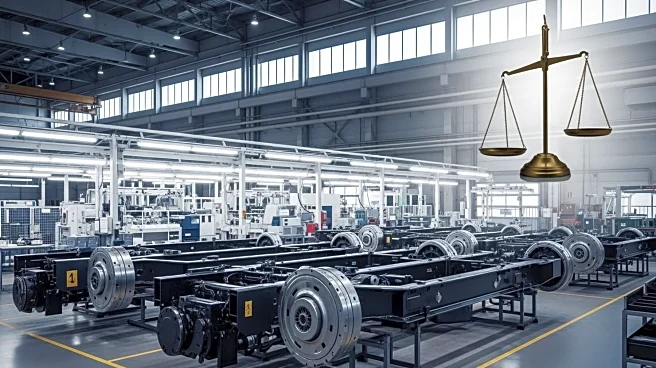What's Happening?
The White House has announced a 25% tariff on imported heavy-duty trucks, set to take effect on November 1. This decision follows a social media post by President Trump and an official proclamation, aiming
to protect U.S. truck manufacturers from foreign competition. The tariff is intended to strengthen national security by boosting domestic production of critical vehicles and parts, encouraging U.S. manufacturing investment, and stabilizing the market share of domestically produced medium- and heavy-duty vehicles. The tariff will apply to non-U.S. content only, with exemptions for USMCA-compliant vehicles. Industry analysts express concern over the potential for increased truck prices and supply chain disruptions, as fleets may delay or cancel orders, increasing demand for used trucks.
Why It's Important?
The implementation of this tariff is significant for the U.S. trucking industry, as it could lead to higher costs for fleets and shippers. The tariff aims to protect domestic manufacturers like Peterbilt and Freightliner, but may also result in increased prices for imported trucks and parts, affecting the overall market. The move is part of a broader strategy to reduce dependency on foreign supply chains and enhance national security. However, the tariff could exacerbate existing challenges in the industry, such as weak demand and fragile supply chains, potentially leading to reshoring efforts despite labor and infrastructure constraints.
What's Next?
As the tariff takes effect, stakeholders in the trucking industry will need to navigate the potential impacts on pricing and supply chains. Fleets may reconsider their purchasing strategies, possibly delaying new truck orders and extending the lifecycle of existing vehicles. The industry may also see increased efforts to source USMCA-compliant parts to mitigate tariff costs. The U.S. Chamber of Commerce has urged the Department of Commerce to reconsider the tariffs, citing concerns over the impact on trade with allied nations. The situation remains fluid, with ongoing discussions about the long-term implications for the industry.













